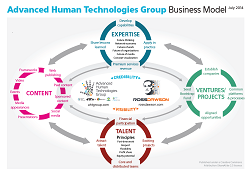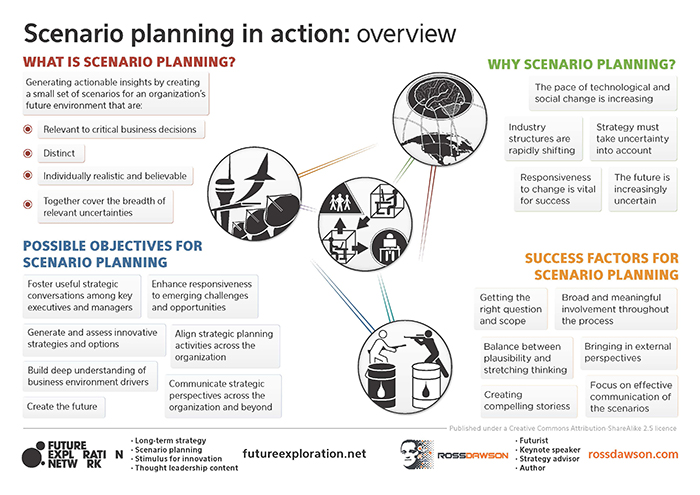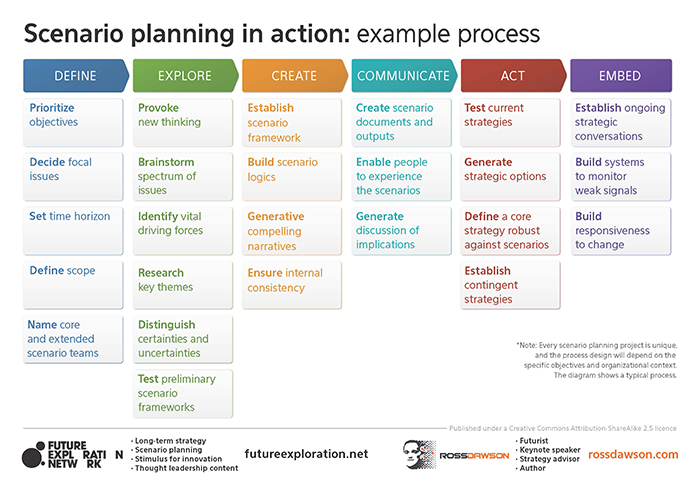Keynote Speaker
Keynote Speaker
Books
In the media
Business Model
Selection of Ross Dawson Frameworks
Scenario Planning in Action
Click on the image to see full-size pdf
Below are summaries of the key points in the overview page:
What is scenario planning?
Generating insights by creating a small set of scenarios for an organization’s future environment that are:
– Relevant to critical business decisions
– Distinct
– Individually realistic and believable
– Together cover the breadth of relevant uncertainties
Why scenario planning?
– The pace of technological and social change is increasing
– Industry structures are rapidly shifting
– Strategy must take uncertainty into account
– Responsiveness to change is vital for success
– The future is increasingly uncertain
Possible objectives for scenario planning
– Foster useful strategic conversations among key executives and managers
– Enhance responsiveness to emerging challenges and opportunities
– Generate and assess innovative strategies and options
– Align strategic planning activities across the organization
– Build deep understanding of business environment drivers
– Communicate strategic perspectives across the organization and beyond
– Create the future
Success factors for scenario planning
– Getting the right question and scope
– Broad and meaningful involvement throughout the process
– Balance between plausibility and stretching thinking
– Bringing in external perspectives
– Creating compelling stories
– Focus on effective communication of the scenarios
Below are summaries of the key points in the example process:
DEFINE
– Prioritize objectives
– Decide focal issues
– Set time horizon
– Define scope
– Name core and extended scenario teams
EXPLORE
– Provoke new thinking
– Brainstorm spectrum of issues
– Identify vital driving forces
– Research key themes
– Distinguish certainties and uncertainties
– Test preliminary scenario frameworks
CREATE
– Establish scenario framework
– Build scenario logics
– Generative compelling narratives
– Ensure internal consistency
COMMUNICATE
– Create scenario documents and outputs
– Enable people to experience the scenarios
– Generate discussion of implications
ACT
– Test current strategies
– Generate strategic options
– Define a core strategy robust against scenarios
– Establish contingent strategies
EMBED
– Establish ongoing strategic conversations
– Build systems to monitor weak signals
– Build responsiveness to change






































